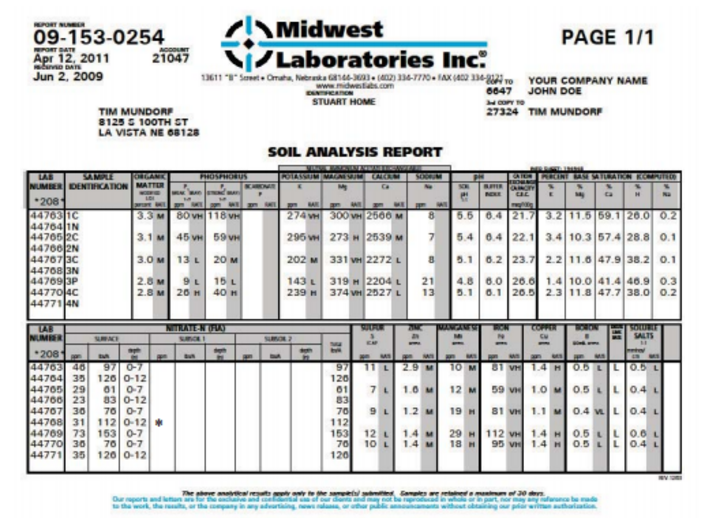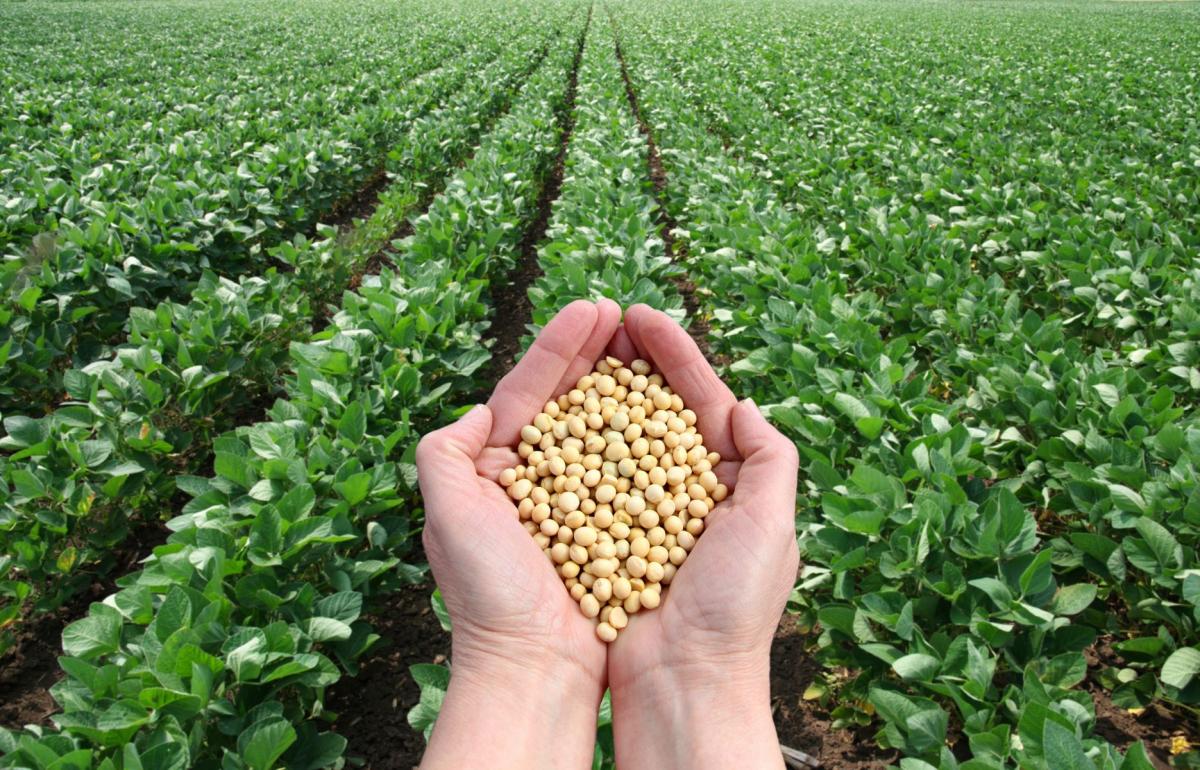Interpreting Soil Test Results
Once you have successfully taken your soil samples, it is time to send them to a lab to undergo analysis.
There are numerous soil labs across Nebraska that will analyze soil samples to determine nutrient levels and various soil properties. It is good to go with a lab that you are comfortable working with and are confident with their results. Once you start using a certain lab, it is best to continue working with that lab in the future so testing methods remain consistent.
Different soil labs will likely have varying protocols to submitting soil samples, but overall the procedure will be similar. When sending in the samples to be analyzed, it is important to make sure they are labeled with the producer’s name, field ID, sample ID and the depth the sample was taken so the sample can be easily classified and tracked. The crop to be grown next year is generally requested to determine recommendations. You will be given the choice of what soil properties you want to be tested. Labs will usually have different packages of tests depending on the results you need and what your management goals. For a soybean cropping system, some of the main characteristics you want to test for include organic matter, pH, and various macro- and micro-nutrients. Depending on what tests have been chosen, a diverse amount of physical and chemical analyses will be conducted on the samples.
"Protocol"
The official procedure.
Submitting Samples:What is the process for submitting samples? |
After analyses of the soil is complete a report will be sent back. It will look something similar to Figure 1.
Depending on what tests were chosen, different information will be provided. At first glance the results can be confusing, but it is important to determine what the values indicate so you are able to come up with effective fertilizer recommendations and management decisions.
When interpreting the results, don’t get too overwhelmed. There are many different resources available to help you figure out what they all represent. The lab that tested the soil may help you, there are publications on the web covering soil test results, and your local extension educator will be able to assist you in understanding the results.
Typically the report will indicate who submitted the samples, dates samples were received and processed, and identification to match up the results to the correct sample. The report will then present information for different soil properties.

"Fertilizer"
A chemical or natural substance added to soil or land to increase its fertility.
Explore More!
For more information on soil results, look over this example!
Soil Texture
The report will generally show the textural class the samples are classified as. This depends on the proportion of sand, silt and clay particles the soil is composed of. Soils may be a combination of all three different particles that classifies it as a type of loam. For a lab to determine the percentage of sand, silt and clay of a sample, a method of particle size analysis must be conducted. Once the percentages are determined, the textural class can be easily be found using the texture triangle.
The soil texture triangle lays out the relationship of the combination of sand, silt and clay to what soil type the proportion of those three create. A sample containing 15% sand, 35% clay and 50% silt would be considered a silty clay loam (Figure 2 soil textural triangle).
There are programs available to assist with figuring out soil types. The Natural Resources Conservation Service has created a Soil Texture Calculator on their website that enables you to input the known percentages of silt, sand and clay, and it automatically calculates the soil type. The NRCS also has a program called the Web Soil Survey, which lays out the different soil types across a selected landscape.
Once the soil texture is known, it is important to know what it signifies and how it influences management decisions. Soil texture effects many parts of a soybean cropping system, a few including the fertility program, irrigation management and weed control.

Soil Texture CalculatorWant to find out what soil type you have? |
Web Soil SurveyWhat are the soil types in your area? |
For many of the different categories the results will usually show a number and a rating. The numbers will usually represent a percentage, a value on a certain scale, or have a unit such as parts per million (ppm). The rating will provide a general guideline for the optimum levels for plant growth. It can range from very low to very high. Sometimes labs will provide a rating stating whether addition of the nutrient will increase, will not increase, or maybe increase crop yield. Some labs may even provide specific nutrient recommendations for certain crops. The actual rating or recommendation value is dependent on many factors such as yield potential and soil type which all need to be taken into consideration. It is best to additionally interpret the results yourself and make your own judgement on management decisions based on your own situation.
"Acidic"
Having the properties of an acid, or containing acid; having a pH below 7.
Organic matter will most generally be represented by a percentage. Soil organic matter is a measurement of the amount of plant and animal residue in the soil. It plays an important role in cropping systems. Organic matter will provide nutrients to the plants throughout the growing season and it plays an important role in the water holding capacity of the soil. Three percent or higher is considered a good organic matter percentage for Nebraska soils.
"Alkaline"
Having the properties of an alkali, having a pH more than 7.
The pH measures the active soil acidity or alkalinity and is represented on a scale from 0-14. A soil pH of 6.9 and below is considered acidic, 7.0 is neutral, and soil pH of 7.1 and greater is alkaline. Soil pH strongly influences nutrient availability. If soil pH is too low or too high, certain nutrients will become unavailable for soybeans to use. The ideal soil pH for growing soybeans is 6.8. If soil pH becomes too acidic, an application of lime should be considered.

Nebraska Soybean Board graciously provided the funding for the Soybean Management Guide.
Course authored by:
Amy Timmerman, extension educator; Aaron Nygren, extension educator; Brandy VanDeWalle, extension educator; Loren Giesler, Plant Pathologist Department head; Ron Seymour, extension educator; Keith Glewen, former extension educator; Charles Shapiro, emeritus extension soil scientist; Amit Jhala, extension weed specialist; Don Treptow, former graduate student
